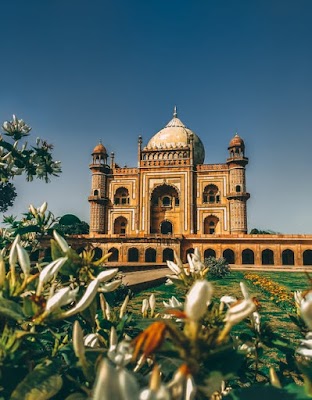
Discover Incredible Places in Delhi
Explore our handpicked collection of breathtaking destinations across India
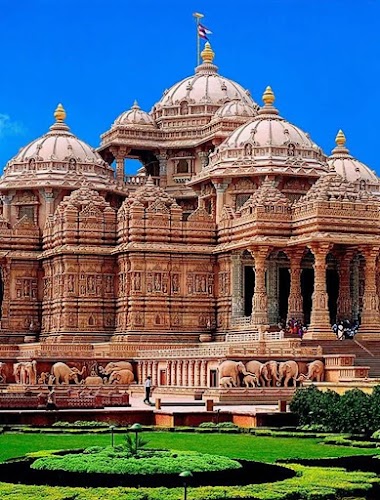
Akshardham Temple
Swaminarayan Akshardham in New Delhi epitomizes Indian culture, spirituality, and architecture. The magnificent temple showcases intricate carvings, stunning exhibitions, and a captivating water show. Visitors marvel at the temple's grandeur, exploring its ornate halls and learning about Indian history and values. The complex also features lush gardens, providing a serene escape from the city's hustle. With its breathtaking beauty and profound message of peace, Akshardham offers an unforgettable experience for people of all ages and backgrounds.

Red Fort
The Red Fort, a UNESCO World Heritage Site, is a magnificent Mughal fort located in Old Delhi, India. Built by Emperor Shah Jahan in the 17th century, it served as the main residence of the Mughal emperors for nearly 200 years. Constructed of red sandstone, the fort complex encompasses a wide range of architectural styles, including Persian, Timurid, and Hindu. Within its walls, visitors can explore palaces, mosques, gardens, and audience halls, each adorned with intricate carvings, marble work, and precious stones. The Red Fort's grandeur and historical significance make it a must-visit destination for anyone traveling to Delhi.

Hazrat Nizamuddin Dargah
Hazrat Nizamuddin Dargah is a revered Sufi shrine dedicated to the Sufi saint, Hazrat Nizamuddin Auliya. It's a place of deep spiritual significance, attracting devotees from all faiths. The atmosphere is vibrant and filled with devotional music (Qawwali), especially in the evenings. The Dargah complex houses the tombs of Nizamuddin Auliya, Amir Khusro (his beloved disciple), and Jahan Ara Begum (daughter of Shah Jahan). The intricate marble work, colorful threads tied by devotees seeking blessings, and the aroma of incense create a truly immersive and unforgettable experience. Remember to dress modestly when visiting. It is not just a religious site but a cultural hub reflecting Delhi's rich heritage.
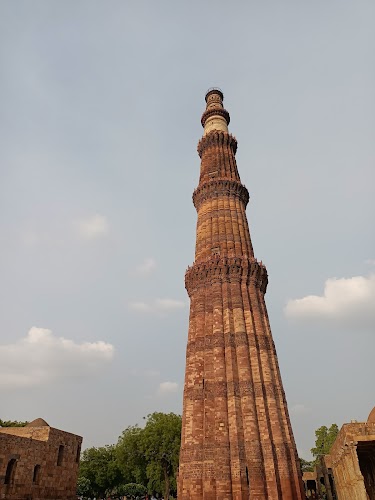
Qutub Minar Complex
The Qutub Minar Complex is a UNESCO World Heritage Site located in Mehrauli, New Delhi. It is home to an array of historically significant monuments, the most iconic being the towering Qutub Minar. This magnificent minaret, constructed with intricate red sandstone carvings, is the tallest brick minaret globally. The complex also features the Quwwat-ul-Islam Mosque, the first mosque built in Delhi, and the Iron Pillar, a metallurgical marvel that has remained rust-free for over 1,500 years. The lush green lawns surrounding the monuments offer a serene escape from the bustling city.
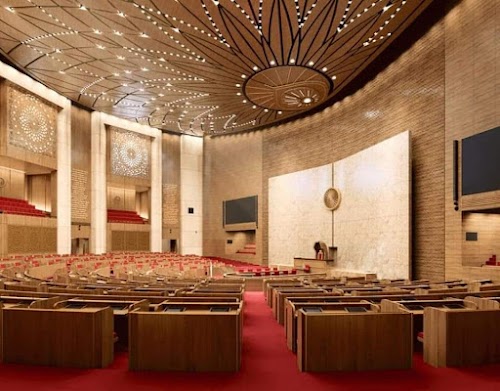
Parliament House
The Parliament House in New Delhi is the seat of the Parliament of India. A circular building designed by Edwin Lutyens and Herbert Baker, it houses the Lok Sabha and the Rajya Sabha, the two houses of Parliament. The building is surrounded by vast gardens and is a prominent landmark in the city. Visitors can witness the proceedings of Parliament from the public gallery with prior permission. The architecture blends classical and indigenous styles, featuring sandstone and intricate carvings. It symbolizes the democratic values of India and is a must-visit for those interested in history, politics, and architecture.
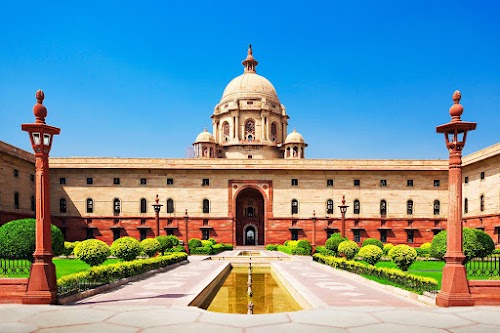
Rashtrapati Bhavan
Rashtrapati Bhavan, the official residence of the President of India, is a majestic landmark located in New Delhi. Spread across 330 acres, it encompasses the main building, Mughal Gardens, museums, and other structures. Visitors can explore the main building's opulent interiors including the Durbar Hall, Ashoka Hall, and the Banquet Hall. The Mughal Gardens, a stunning blend of Mughal and European landscaping styles, are a major attraction during their seasonal openings. The Rashtrapati Bhavan Museum Complex offers insights into the building's history, presidential collections, and Indian art and culture. A visit to Rashtrapati Bhavan provides a glimpse into India's presidential heritage and administrative heart.
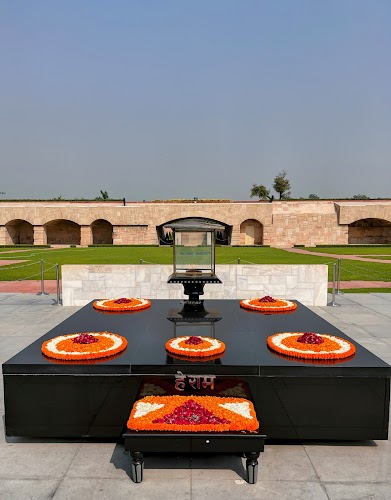
Rajghat Memorial
Raj Ghat is a memorial dedicated to Mahatma Gandhi, located in New Delhi, India. It is a simple yet powerful black marble platform that marks the spot of Gandhi's cremation on 31 January 1948, just days after his assassination. The memorial is surrounded by a peaceful garden, providing a serene environment for reflection and remembrance. "Hey Ram", Gandhi's last words, are inscribed on the platform. An eternal flame burns perpetually at one end. Visitors often remove their shoes before entering the memorial grounds as a sign of respect. The atmosphere is solemn and encourages contemplation of Gandhi's life, teachings, and legacy of nonviolent resistance.
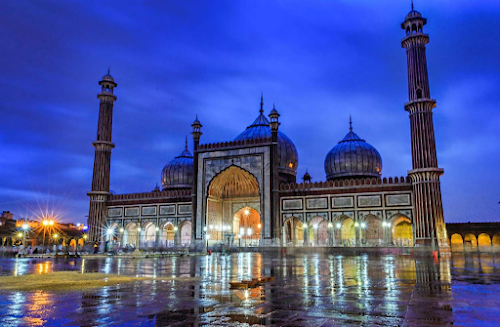
Jama Masjid
Jama Masjid of Delhi, is one of the largest mosques in India. It is situated in Old Delhi and is a magnificent example of Mughal architecture. The mosque was built by Mughal Emperor Shah Jahan between 1644 and 1656. The courtyard of Jama Masjid can accommodate up to 25,000 people. The mosque has three great gates, four towers and two 40 m high minarets constructed of alternating vertical strips of red sandstone and white marble. The mosque has a stunning view of the city from the top of the southern minaret which is open for tourists to climb. Jama Masjid remains an active place of worship and a major tourist attraction of Delhi.
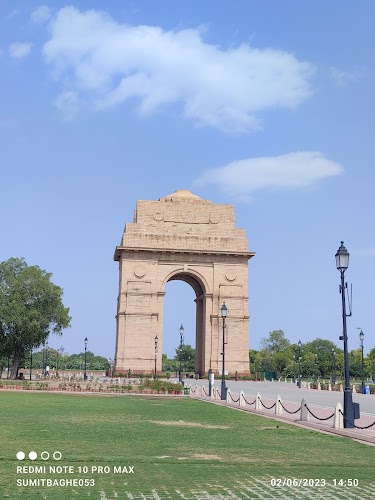
India Gate
India Gate is a war memorial located astride the Rajpath, on the eastern edge of the ceremonial axis of New Delhi, formerly called Kingsway. It stands as a memorial to 82,000 soldiers of the British Indian Army who died between 1914 and 1921 in the First World War and the Third Anglo-Afghan War. It is also India's largest war memorial. Originally called the All India War Memorial, it bears the names of more than 13,516 British and Indian soldiers killed in the Northwestern Frontier of India and the Third Anglo-Afghan War. Amar Jawan Jyoti, an eternal flame, burns day and night under the arch to remind the nation of soldiers who laid down their lives in the Indo-Pakistani War of 1971.